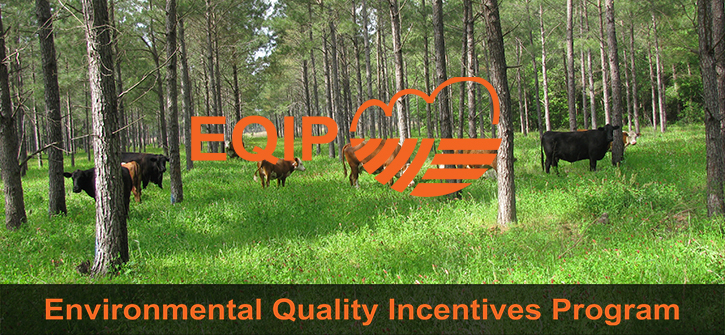 Conservation benefits for California through the federal Farm Bill’s Environmental Quality Incentives Program (EQIP), totaled more than $84 million in fiscal year 2017. The largest investments were in air quality, water conservation and water quality and forest-related conservation for both proactive and post-fire assistance.
Conservation benefits for California through the federal Farm Bill’s Environmental Quality Incentives Program (EQIP), totaled more than $84 million in fiscal year 2017. The largest investments were in air quality, water conservation and water quality and forest-related conservation for both proactive and post-fire assistance.
Farmers, ranchers and private non-industrial forest owners statewide voluntarily partnered with USDA’s Natural Resources Conservation Service (NRCS) to plan projects with co-benefits to natural resources and agricultural land. Each landowner shares in the cost of their projects, bringing the total California conservation investment last year to over $150 million.
“California’s farmers and ranchers continue to demonstrate keen interest in conservation,” says Acting State Conservationist Ray Dotson. “We received nearly 3,500 applications for projects to protect water, build soil, promote cleaner air, improve forest health, add wildlife habitat and more and we were able to fund about half of those.”
Notable trends, according to Dotson, were a steadily increasing need for help in overgrown or fire-damaged forestland, steady interest in air quality and water conservation, and a significant and growing interest in hoop houses. “Hoop houses, or seasonal high tunnels, are being embraced in a big way by smaller farmers with fewer resources. These structures help farmers feed nearby communities with less transportation, lowering their costs and carbon footprint,” explained Dotson.
Work on rangeland projects to help greater sage grouse populations has doubled to $1.3 million since 2015 thanks to work done by the US Forest Service to complete NEPA analyses on land owned by that Agency and grazed by private ranchers.
“We are proud of the work we have done with so many farmers, ranchers and partners this year and we believe it shows that this model of voluntary conservation, using planning and incentives, works in California,” says Dotson.
$3.5 million of EQIP investments were also made in partnered projects under the umbrella of NRCS’s Regional Conservation Partnership Program. RCPP combines EQIP, easement programs and leveraged resources from partners to address local stewardship concerns in a targeted way.
Each EQIP participant, and over 200 others, worked with NRCS in 2017 to voluntarily create a conservation plan that identifies goals for improving natural resources on their property. The plan outlines possible structural and management solutions to address resource needs.










